Basking Sharks at Kilkee Cliffs during Lockdown 2020.

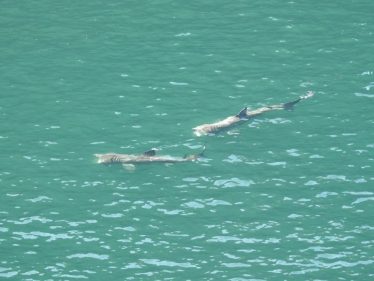
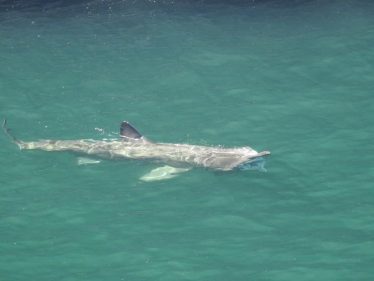
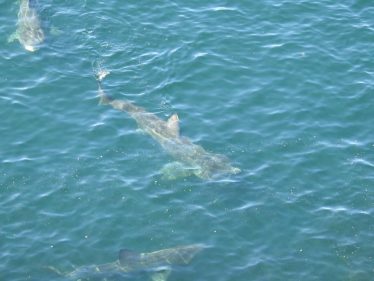
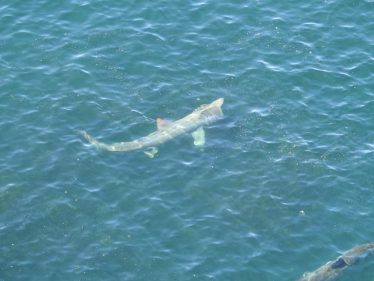
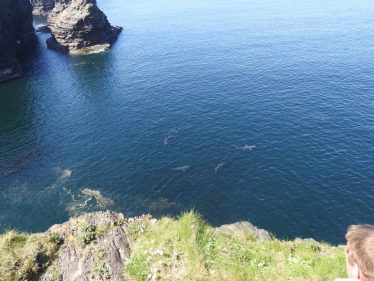
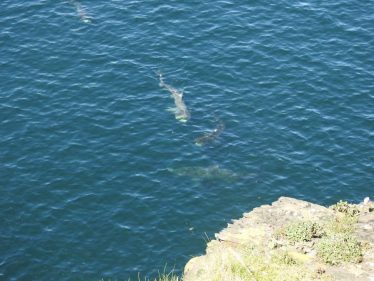
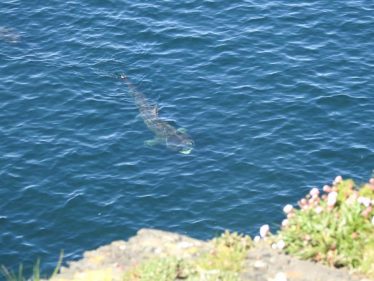
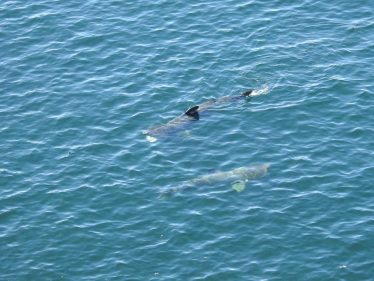
The basking shark (Cetorhinus maximus) is the second-largest living shark, after the whale shark, and one of three plankton-eating shark species, along with the whale shark and megamouth shark. Adults typically reach 7.9 m (26 ft) in length. It is usually greyish-brown, with mottled skin.
A slow-moving filter feeder, its common name derives from its habit of feeding at the surface, appearing to be basking in the warmer water. It has anatomical adaptations for filter-feeding, such as a greatly enlarged mouth and highly developed gill rakers. Its snout is conical and the gill slits extend around the top and bottom of its head. The gill rakers, dark and bristle-like, are used to catch plankton as water filters through the mouth and over the gills. The teeth are numerous and very small, and often number 100 per row. The teeth have a single conical cusp, are curved backwards and are the same on both the upper and lower jaws. This species has the smallest weight-for-weight brain size of any shark, reflecting its relatively passive lifestyle.
Basking sharks have been shown from satellite tracking to overwinter in both continental shelf (less than 200 m or 660 ft) and deeper waters. They may be found in either small shoals or alone. Despite their large size and threatening appearance, basking sharks are not aggressive and are harmless to humans.
The basking shark has long been a commercially important fish as a source of food, shark fin, animal feed, and shark liver oil. Overexploitation has reduced its populations to the point where some have disappeared and others need protection.Back in 18th century Ireland , basking sharks were highly prizes for their liver oil. In the absence of paraffin, this oil was considered ideal for dressing wounds, preserving wood and , most notably , lighting lamps. The streets of Galway, Waterford and Limerick were lit by shark oil until at least 1742.
Shark infested waters isn’t a term you normally associate with the Irish coastline, yet in late spring and early summer of 2020 the Kilkee and Loop Head coastline was one of the best places in Europe to see one of the world’s largest harmless plankton-feeders. They slowly move up the coast line of Ireland from Mizen Head to Malin Head gently feeding in family groups. They don’t always come as close to shore in the numbers that happened in 2020 along the Atlantic coastline of County Clare however these creatures do appear usually a bit further out to sea. They were noticed following each other in circles and this is now presumed to be some mating ritual.
During lockdown those of us who could gazed in awe with our eyes, binoculars or took photos. We all felt the sacred in action. The question most people asked was do they close their mouths and yes is the answer as they swallow on average every 60 seconds.
These creatures come along the coast in May-June every year and is one of our areas Natural Heritage gifts.
All photographs in this article were taken along the Atlantic Cliffs between Kilkee and Loop Head in May 2020.




No Comments
Add a comment about this page